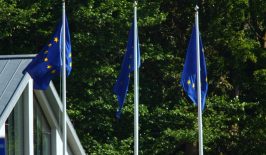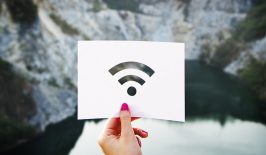The corona pandemic has revealed the stark inequalities in society when it comes to things like internet access and the use of digital technologies – and the difference in access between different areas and countries become particularly apparent. Large parts of our lives now take place entirely online: social interaction, remote working, home schooling, access to health care and our financial transactions all have to be accessible from the home computer, at least temporarily. Doing this online is a change for a lot of us, but it is a challenge that can be solved. But not everyone has those options: About half the world’s population does not have access to the internet. More than 80 percent of people in the poorest countries are still offline, with women and minorities particularly affected. Digital differences could become a new kind of inequality in the future. Equal opportunities can only exist if we are globally networked.
This problem has also been recognised by the United Nations. Secretary General Antonio Guterres believes that the “Internet should be a right”. A High-level Panel on Digital Cooperation (HLPDC) has already been convened in 2018. The aim of the forum is to strengthen international cooperation between various interest groups. Civil society actors, governments and private companies want to work together to contribute to a secure and inclusive digital future for all.
A new action plan for digital cooperation
In June 2020, UN Secretary General Guterres published a roadmap for digital cooperation. The action plan aims to improve our digital world, making it safer and fairer by implementing the recommendations of the HLPDC. The goal is ambitious: they want to implement concrete measures to improve digital cooperation in eight key areas. For example, they want to achieve “universal connectivity” by 2030, including the digital inclusion of all groups of people, especially minorities. Great importance is attached to protecting human rights and ensuring high security standards in the digital era. They also call for global cooperation on artificial intelligence in order to help build global capacity for the development and use of AI in a manner that is “trustworthy, human rights-based, safe and sustainable, and promotes peace”.
The UN has recognised that in a global context, there are major differences when it comes to the access and use of digital technologies. Many countries in the Global South do not have comprehensive internet coverage and can only benefit from new digital technologies to a limited extent. The main focus of the roadmap is therefore on integration: it should be possible to benefit from the progress of digital technologies worldwide. This will create a common basis for all interest groups, including underrepresented players without a large lobby. A common platform is to be created. Data and software are to be made available as open source wherever possible.
Various alliances and initiatives are now being formed to help achieve the formulated goals. These pursue a multi-stakeholder approach in which different actors work closely together.
Taking the roadmap from theory to practice
It is still unclear how exactly the roadmap will be implemented in practice, with many uncertainties and ambiguities that have to be dealt with. The exact role and function of the various new initiatives has not yet been clarified. It is not clear who exactly the stakeholders are who will be involved in the projects. The role of the UN member states is also uncertain, and it has not yet been decided how they will participate and how it will be ensured that decisions are actually implemented. Added to that is the fact that there are huge differences between the UN member states – between democratic and authoritarian governments, and also in regard to their treatment of digital technologies. Considering all this, the planned involvement of non-state actors, such as NGOs, is problematic and rather unlikely.
There is clearly still a large amount of open questions. But the very fact that the roadmap and its multi-stakeholder approach exists, shows us that these important digital issues have been identified – and that work is being done to tackle them. It’s an ambitious attempt to make digital technologies safer, more accessible and more equitable for all, and one that we will be following over the next few years.
This is a translation of an original article that first appeared on RESET’s German-language site.






